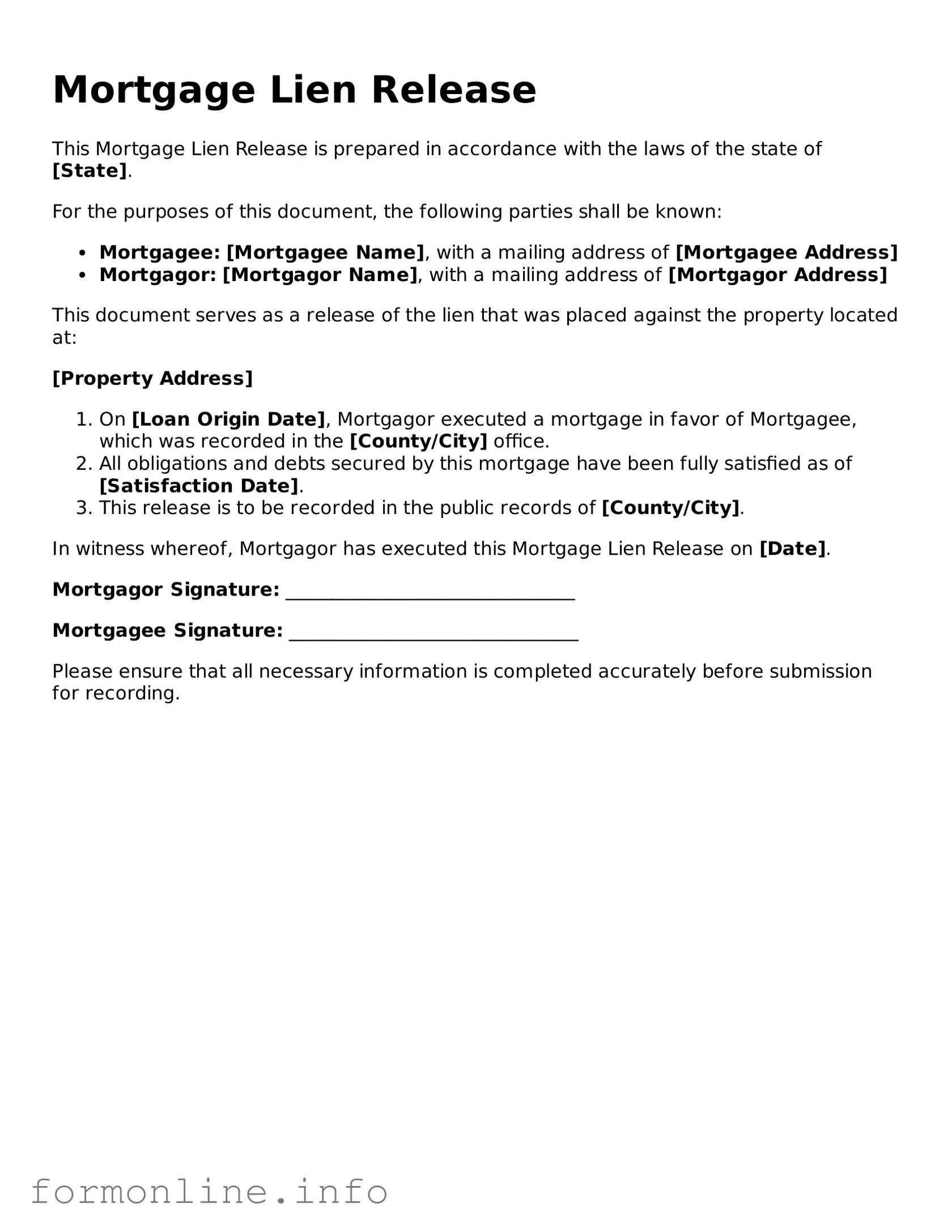The Mortgage Satisfaction form serves a similar purpose to the Mortgage Lien Release form. Both documents indicate that a borrower has fulfilled their obligations under a mortgage agreement. Once the mortgage is paid off, the lender issues a Mortgage Satisfaction form, which formally acknowledges that the borrower no longer owes any money. This release clears the title and allows the property owner to sell or refinance without any encumbrances from the previous mortgage.
The Deed of Reconveyance is another document closely related to the Mortgage Lien Release. This form is used primarily in states that follow a deed of trust system. When a borrower pays off their loan, the lender executes a Deed of Reconveyance to transfer the title back to the borrower. Like the Mortgage Lien Release, it serves to clear the lien from the property, ensuring that the borrower has full ownership rights once again.
A Certificate of Satisfaction is also akin to the Mortgage Lien Release. This document is issued by the lender upon the full repayment of a mortgage. It serves as proof that the mortgage has been satisfied. While it is often used interchangeably with the Mortgage Lien Release, it may be more common in certain jurisdictions. Both documents ensure that the borrower’s credit report accurately reflects the status of their mortgage.
The Quitclaim Deed can be compared to the Mortgage Lien Release in that it transfers ownership rights. However, it is typically used to transfer property between parties without a sale. If a mortgage is paid off and the title is held by multiple parties, a Quitclaim Deed may be used to remove one party from the title. This document does not provide the same lien release but serves to clarify ownership after a mortgage has been satisfied.
For those navigating the complexities of property transactions, understanding the significance of a Release of Liability form is crucial. This document not only protects your interests but ensures all parties involved are on the same page, preventing future legal disputes. To begin the process, visit missouriform.com/ to fill out the necessary documentation that primes you for clear ownership and peace of mind.
An Affidavit of Payment is another relevant document. This sworn statement confirms that a borrower has completed all payments on their mortgage. While it does not serve as an official release, it can be used in conjunction with a Mortgage Lien Release to provide additional proof of payment. It may help resolve disputes or clarify the status of the mortgage for future transactions.
The Release of Lien form is also similar to the Mortgage Lien Release. This document is used when a lender formally relinquishes their claim to a property after a debt has been paid. It can apply to various types of liens, not just mortgages. Like the Mortgage Lien Release, it ensures that the property is free from encumbrances, allowing the owner to proceed with selling or refinancing.
Finally, the Loan Payoff Statement shares similarities with the Mortgage Lien Release. This document details the total amount required to pay off a mortgage, including any fees or interest. Once the borrower pays this amount, a Mortgage Lien Release is typically issued. The Loan Payoff Statement serves as a crucial step in the process, providing clarity on the borrower’s obligations and the lender’s confirmation of satisfaction.
